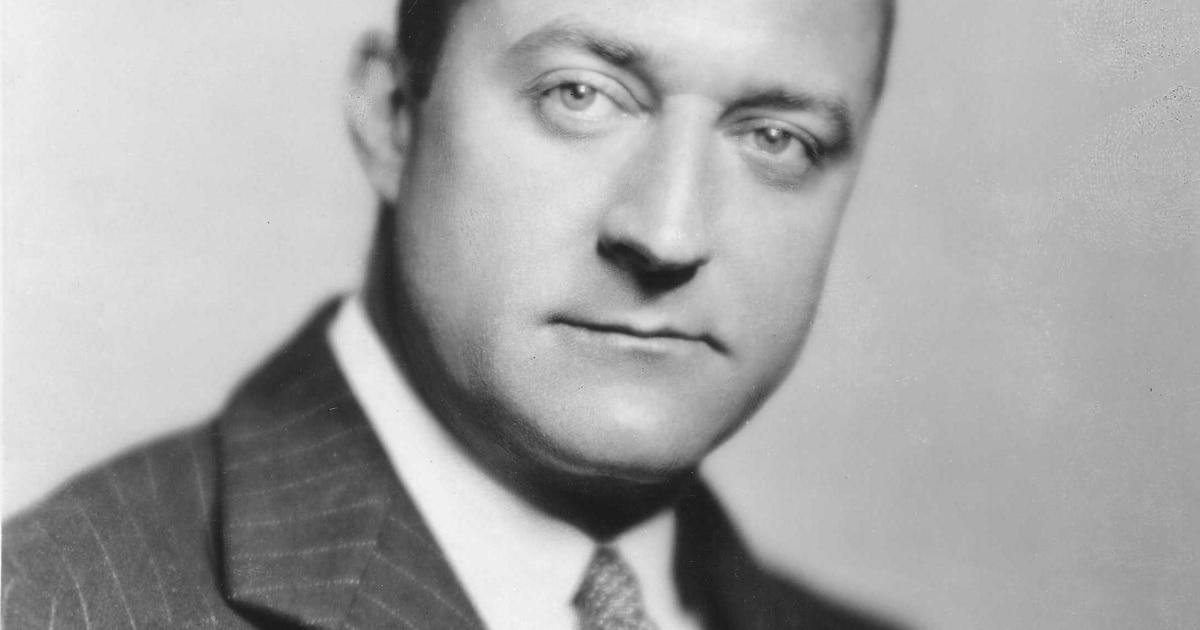
Why Hazlitt Opposed the Bretton Woods System
The Bretton Woods plan for monetary reconstruction did not go as far as Keynes would have liked. He proposed a full-scale world central bank and a single paper currency for all nations, which he wanted to be called the “bancor,” so there could be no escaping inflation. That plan is still awaiting implementation. As it was, the Bretton Woods conferees, under pressure from the United States—which wanted the dollar to be the bancor—took a compromise position. They would create not a gold standard—though it was called that for reasons of credibility—but Instead a global gold dollar standard. Or, more precisely, a phony gold standard.
The Bretton Woods system established a gold dollar that was fixed at $35 per ounce. But it was the only currency so fixed. Every other currency could be a fiat currency based on the dollar. What this obligated the United States to do, as the main creditor nation to the world, was ship out dollars to the world while somehow maintaining the dollar’s connection to gold. It was a prescription for disaster, as should be obvious.
To be sure, there is nothing wrong with having a gold standard in one country. The United States could do that now. But that was not what Bretton Woods established. The dollar was not convertible into gold at the domestic level. You could not go into your bank and exchange dollars for gold. It was only convertible on an international level, and only for governments, so that the United States was obligated to ship out gold instead of paper when it was so demanded.
This established some limit on credit expansion at home but not enough of one. Few were courageous enough to demand gold from the empire. Yet it is clear just from this description of the plan that the pressure to spend and redeem would eventually lead the United States to go back on its word. It took some twenty years, long after the original crafters of the deal had left the scene, but economic logic could not be gainsaid.
The breakdown really began soon after the plan was implemented. But most of the effects were disguised through currency controls. Once the 1960s came, and the expenses of LBJ’s welfare-warfare state mounted, the Fed played its traditional role as the financier of big government. Pressure on the dollar mounted, foreign governments became more interested in the gold than the paper, and the whole cockamamie scheme unraveled under Nixon’s welfare-warfare state. When the world entered the all-paper money regime, most economists said than the price of gold would fall from $35. The Austrians predicted the opposite.
From the very beginning, Henry Hazlitt saw it all coming and warned against Bretton Woods. He took the job of editorial writer for the New York Times in 1934, after having been drummed out of the editorial spot at the post-Mencken American Mercury because he was Jewish. Mencken had called Hazlitt “the only economist who can really write,” and the Times job was a good position for him, one for which he was well prepared. He would write mostly unsigned editorials, speaking for the paper and not for himself
In fact, when many years later his editorials were collected in a book edited by George Koether, called From Bretton Woods to World Inflation, his archives were the only place that revealed his authorship. Because he was writing them in an institutional voice, his tone was moderated to some extent, a fact he later regretted. Even so, anyone today has to stand in amazement when reading the New York Times editorializing against loose money, paper currency, central banking, and the like. But that was what Hazlitt accomplished.
He began his editorials in 1934 with a major call for the reinstitution of the gold standard. He urged that the United States and Britain jointly agree to a fixed gold standard. He said that this action would “symbolize a return to international collaboration in a world that has been drifting steadily toward a more and more intense nationalism.” And truly, if one thinks about it, a world that had heeded Hazlitt’s advice might have avoided the incredible calamity of World War II, the tens of millions of dead, the communization of Europe, and the bankruptcy and horrors the followed. And why? Because the nationalism about which he warned in 1934 would have abated, and all governments would have sought diplomatic rather than murderous solutions.
Of course, his advice was not heeded, and the drive to destroy money and prosperity continued, all the way to the globalized holocaust of World War II.
Now let us jump ahead, ten years after Hazlitt had written his first blast. Hazlitt was still advocating the same thing, not a system in which strong currencies subsidize bad policies, but a system in which each nation maintains the integrity of its own currency. That requires not centrally planned integration but the opposite. Instead of promising to intervene to bail out bad debt, nations should swear not to intervene. Only this path prevents moral hazard and maintains the gold standard.
He wrote as follows: “the belief that only a rich nation can afford a gold standard is a fallacy.” Gold is suitable for every nation, he explained, provided it has something to sell. He concludes with these words before the Bretton Woods conferees gathered:
The greatest single contribution the United States could make to world currency stability after the war is to announce its determination to stabilize its own currency. It will incidentally help us, of course, if other nations as well return to the gold standard. They will do it, however, only to the extent that they recognize that they are doing it not primarily as a favor to us but to themselves.
It is remarkable to realize that these words appeared in a New York Times editorial! We have here a world far removed from the Keynesian drivel of Paul Krugman. Put simply, there is no justice in this world when Hazlitt, who was correct, gets shoved out and his successors are of a school of thought that was completely wrong.
Keep in mind, too, that this was written one month before the opening of the conference. In the weeks that followed, Hazlitt was hot on the trail for news on what was coming. He seized on the statement of principles. It expressly permitted a change in the gold value of member currency on a unanimous vote from government.
Hazlitt spoke with a passion as follows:
This is a provision which would permit world inflation. Experience has shown that it is extremely unlikely that any government will wish to raise the unit gold value of its currency….The political pressures from time immemorial, and particularly in the last three decades, have been in the direction of devaluation and inflation.
Even before the delegates met, he correctly saw that the uniformity provision was not a limit to inflation but rather a license. If one country devalues, it sees the value of its currency fall on the international exchange. But if this is done in cooperation with everyone else, the country can avoid the penalty. This is precisely what accounts for the decades-old drive for international cooperation in monetary affairs. It is the same driving force behind why the Fed was concocted. So long as the system is decentralized, each bank or each country must deal with the fallout from its own bad policies. But if you centralize the system, bad policies can be more easily swept under the rug, with the costs widely dispersed throughout the system.
Or as Hazlitt wrote, “it would be difficult to think of a more serious threat to world stability and full production than the continual prospect of a uniform world inflation to which the politicians of every country would be so easily tempted.”
Two days later, still before the conference opened, Hazlitt nailed it and explained precisely why Bretton Woods could not last. Under the plan, the creditor nations—meaning the United States and Britain—would pledge themselves to buy the currency of net debtor nations in order to keep the currency value at parity. Even if other countries devalued their currencies, the United States would be on the hook for buying it to maintain the fixed paper-to-gold ratio. This is precisely what led to the undoing of the entire system from 1969 to 1971. This, my friends, is prophetic.
Hazlitt was not just speaking for a sector of opinion here. So far as he could tell, and so far as anyone has been able to discern since these days, Hazlitt was completely alone in speaking these truths. No one else joined him, at least not in the United States. France had Jacques Rueff, who famously denounced the entire scheme. Switzerland had Michael Heilperin, who stood firm for the gold standard. Hayek in London actually submitted to the Bretton Woods delegates a draft plan for a real gold standard for every nation. It was completely ignored.
Only Hazlitt was on the front lines in the United States, by himself, writing constantly and passionately day by day to make a difference. More remarkable still, he was able to voice these lone opinions via the institutional voice of the New York Times. That was quite the accomplishment, a real testament to his own power to persuade.
All of his thoughts that I’ve so far reported were penned before the monetary conference had even met. He had already spotted the core problems of the proposed plan and explained how it would unravel.
On July 1, 1944, when the representatives first gathered, he greeted them with a punch in the nose. He questioned their competence, employing what would later be called the Hayekian knowledge problem. Here are his words from the editorial written the day the conference opened:
it would be impossible to imagine a more difficult time for individual nations to decide at what level they can fix and stabilize their national currency unit. How could the representatives of France, of Holland, of Greece, of China, make any but the wildest guess at this moment of the point at which they could hope to stabilize?
The delegates must have read that passage and spewed their morning coffee across the table. Too bad that more of them didn’t choke on their crumpets.
Hazlitt further said that the conference was planning to solve a problem by not realizing what the problem was. The issue, he said, is not a lack of currency value parity but rather the policies that are driving down the value of the currency in weak countries. He writes that it is of course possible to temporarily fix any price. But in the long term, it proves impossible.
He offers the analogy of a stock share that is worthless but nonetheless sells for $100 each. It is possible to maintain a high price, but when the resources of the buyer run out, the stock price will drop. There is no force on the planet that can keep a falling price from dropping once the resources to maintain it are gone.
Of course, this insight is a short summary of nearly all economic policy of our times. Whether the subject is houses, stocks, or wages, the goal of the stimulation packages has been to maintain high prices that cannot be maintained. As for the resources to make the high prices stick, in our day, the answer is to create ever more phony money to engage in this make-believe program.
In the midst of the Bretton Woods proceedings, Hazlitt hit the American delegates with another punch in the nose. He made fun of how the Americans, in particular, are under the impression that they can solve any problem in the world by setting up a machinery in the form of an organization. It could be an organization to make water run uphill or to keep rocks from falling, but the Americans are under the belief that if the president is behind anything, anything can be accomplished.
He states the contrary truth very bluntly. The restoration of peace and prosperity will not come from setting up another organization but rather by abandoning protectionism, capital export restrictions, important quotas, and competitive depreciation of currencies. America’s greatest contribution, he wrote, would be to further balance its budget and halt deficit financing.
As for the American love of machinery, he writes that “genuine international economic cooperation after the war will be possible only if there is a profound change from the ideology of the Thirties.”
As the proceedings dragged on, Hazlitt turned out to have foreshadowed the newest development. The delegates had not only planned to create the IMF but also create what was then the predecessor to the World Bank: the International Bank for Reconstruction and Development. The whole project, wrote Hazlitt, “rests on the assumption that nothing will be done right unless a grandiose formal intergovernmental institution is set up to do it. It assumes that nothing will be run well unless Governments run it.”
Toughening his rhetoric, Hazlitt goes after Keynes by name, drawing attention to his preposterous claim that it would be invidious to discriminate between member nations based on their credit worthiness. Hilariously, Hazlitt sums up the plan for the World Bank with this general observation: “world economic revival will not necessarily flow from a plan under which taxpayers are saddled by their own Governments with losses from huge foreign loans made regardless of their soundness.”
After the meetings closed, the debate on ratification began. Hazlitt made it clear what was really at stake: the freedom of the individual vs. the plans of government. “These agreements presuppose,” he wrote, “a world in which the type of government controls developed in the Twenties and Thirties are to be expanded and systematized. What is contemplated is a world in which international trade is State-dominated.”
Hazlitt must have felt intense pressure in these days. There are times in politics when the state and its paid experts make everyone feel as if some proposed plan is absolutely necessary for survival, and to be against it is tantamount to treason. In our own times, it was this way during the NAFTA debate, the WTO debate, and the debate on the creation of such bureaucratic monstrosities as the Department of Homeland Security and the Transportation Security Administration, or the drive for wars in the Middle East, or the hysteria for TARP et al. To be the outlier is to elicit heaps of scorn and derision.
It was the same with Bretton Woods during 1944 and 1945. No one ever found a logical problem or a factual error in what Hazlitt was writing. They didn’t bother to. The point was that this was a mega priority for the international elite and no respectable paper could really oppose the plan.
As a way of showing that he was not a lone critic, Hazlitt began to write about other critics, who were very few in number. He seized on a small criticism offered by any journal or any association and highlighted it. But the critics were thinning, and every time one reared its head, he was summarily slapped down. All the while, the defenses of Bretton Woods were getting more extreme, with claims that if it didn’t pass, the world would fall apart. The supporters were more and more open about their antimarket ideology, as when Secretary Morgenthau openly said that business can’t run foreign exchange. It is up to the governments of the world to do it.
Hazlitt drew attention to these statements and also the open statements by Keynes that Bretton Woods amounted to the opposite of a gold standard. Hazlitt wrote his most poignant rhetoric in these days, claiming that the result of the monetary plans would be world inflation and massive economic instability. The internal pressures were increasing on him, as letters started arriving from London and DC to object to what the paper was saying. Hazlitt clearly saw the writing on the wall but still stuck to his guns all throughout the spring of 1945 as Congress was debating and preparing ratification.
Finally, the publisher of the New York Times had had enough. Arthur Sulzberger came to him and said, “When 43 governments sign an agreement, I don’t see how the Times can any longer combat this.”
Hazlitt began to pack his bags. After he left, his revenge was a massive article on the subject in the American Scholar, published later that year. Then he wrote the book that would become the biggest selling economics book of all time: Economics in One Lesson. His goal with this book was to propagate the core principles of economics, so that anyone could do what he had done, which was see the fallacies of the logic behind crazy government schemes. He wrote the book in record time and got it out the door as soon as possible. Of course it was a blockbuster. It remains to this day our bestseller book.
In 1967, Hazliltt also had a last laugh, if it is a laughing matter to see your worst predictions come true. Hazlitt was now a syndicated columnist with the Los Angeles Times. He wrote about the unraveling of the system, which finally happened in 1969. By 1971, the entire world was on a fiat-money paper standard and the result has been nothing short of catastrophic for societies and economies, which have been thrown into unrelenting chaos.
To be sure, Hazlitt was not, as he said, the “seventh son of the seventh son.” He wasn’t born with some amazing prophetic power. What Hazlitt did was read Mises and come to understand monetary economics. It sounds easy until you realize just how rare these talents were in his day and in ours.
There is another aspect to what Hazlitt did. He could have very easily relented or just stayed silent. It took moral courage and incredible intellectual stamina to tell the truth as he did when the whole world seemed to be against him. But so far as he was concerned, this was why he was put on the earth and why he got into writing in the first place: to tell the truth. He wasn’t threatened with jail or violence. The only thing he had to fear was the derision of his colleagues. What truth teller in the history of the world hasn’t faced that?
We might ask ourselves: why is it important to revisit this history now? As regards the details of Bretton Woods, it is extremely important to understand that this was not a genuine gold standard. It was a fake gold standard managed by an unworkable plan cobbled together by governments. It is the height of absurdity that supply-siders and others have for years been pining for a return to Bretton Woods and calling it a return to the gold standard. A new Bretton Woods would fail as surely as the first one did. It would certainly not be a step in the right direction to reinstitute Bretton Woods.
That Bretton Woods was called a gold standard was an exercise in obfuscation. It happened for the same reason that NAFTA was called free trade or the FTC is said to protect competition. The state has long used the language of liberalism and the market economy as a plow to push through its opposite. The gold standard was an early victim in this war over words.
A genuine gold standard is implemented currency by currency. It provides for domestic, on-demand convertibility. It allows for banks to fail on their own. It has no central banks. It surely has no international monetary institutions for lending bankrupt governments money. This is the only way toward real stability. Hazlitt said it in the New York Times and it remains true today.
If we want an impenetrable system of money and banking, we should follow Rothbard (Hazlitt once told me that the greatest achievement of the Mises Institute was to give Murray a “suitable platform.”) and completely privatize the system, permitting private coinage of any money. This would be all the more viable in our own times, with digital payment systems and global communication. In fact, I’m quite sure that had the state not intervened, the internet would have already put together a competitive system of currency and banking that would exist completely outside the state’s purview. A very viable means of reform we could undertake right now is for the state to simply do nothing. The dollar might be beyond salvation at this point, but money itself is not, of course. Money is an essential part of the market economy, so therefore let us let the market make it and manage it.
The stakes are impossible to overstate. Fiat paper money is destroying civilization right now. It has fueled the predator state. It has destabilized markets. It has wrecked balance sheets and distorted financial markets. It has wrecked the culture by leading the whole world to believe that prosperity can come as if by magic, that stones can be turned into bread. It might yet unleash a ravaging inflation that will be welcomed by dictators, despots, and cruel tyrants.
How important is sound money? The whole of civilization depends on it. We must accept no compromise. Down with government plans. Down with international commissions. Down with attempts to manipulate and control that always end in robbing us and making us poorer than we would otherwise be. We should embrace no more and no less than what the old liberals of the 18th and 19th centuries championed. All we ask is laissez-faire.
This essay was adapted from a longer version published in June 2010.



